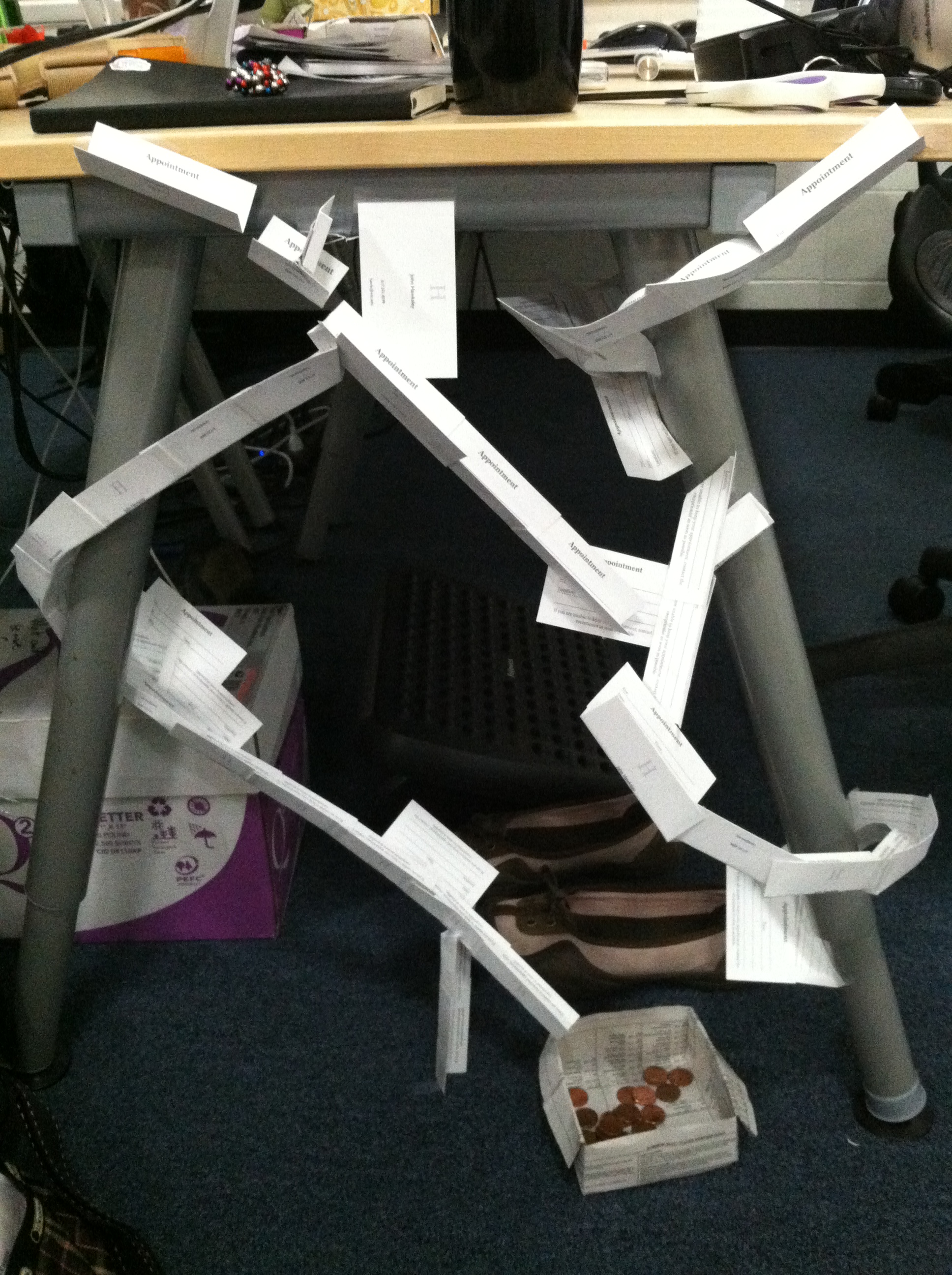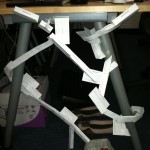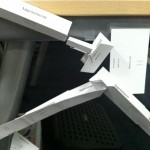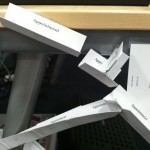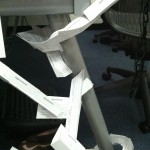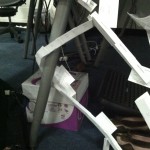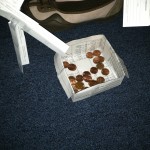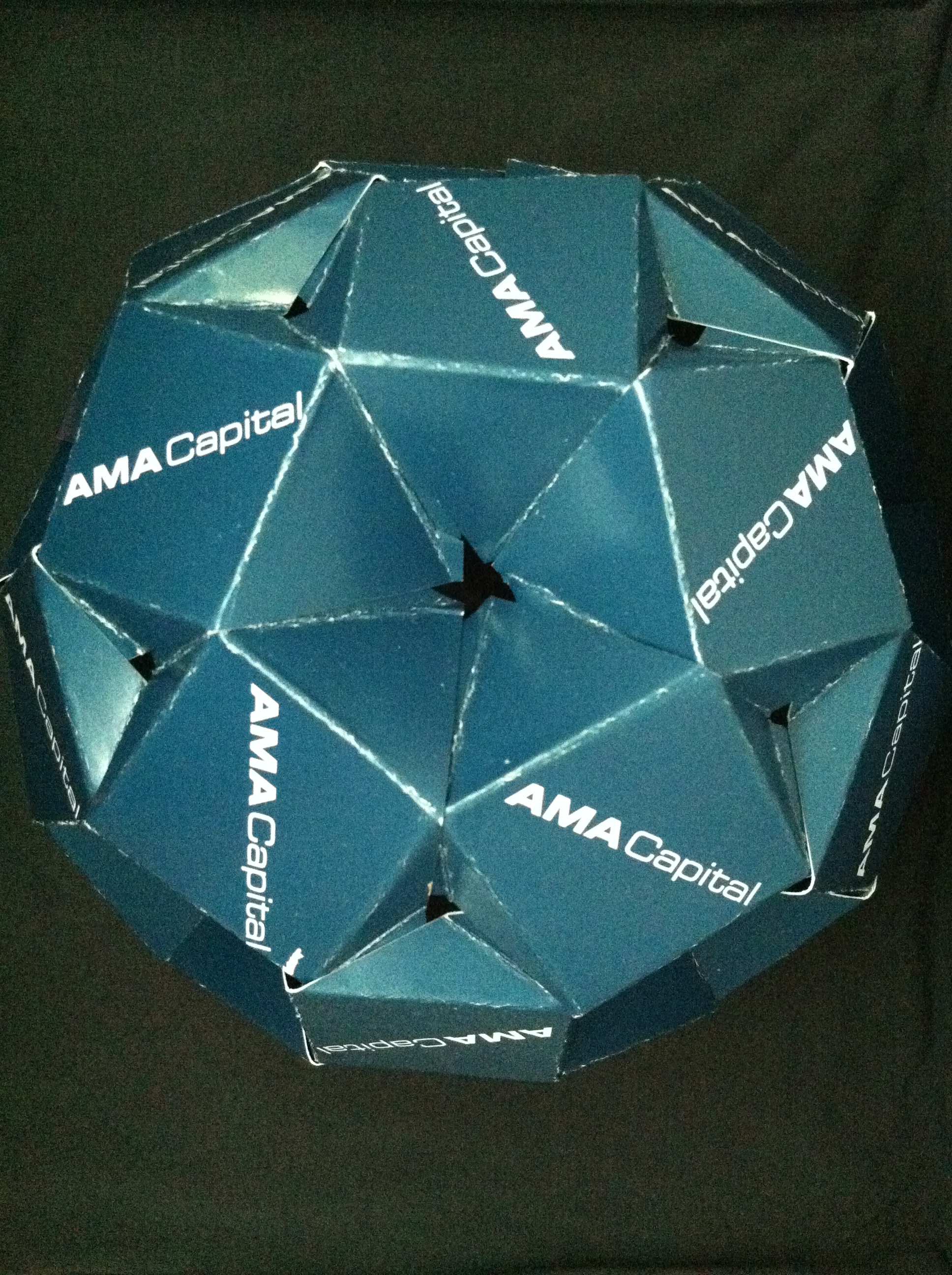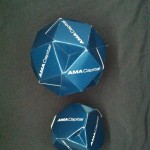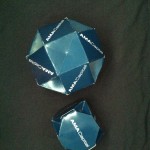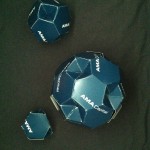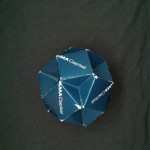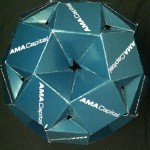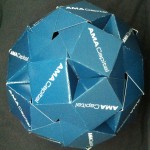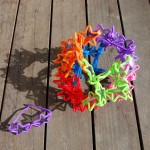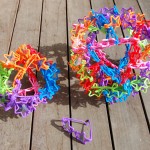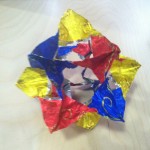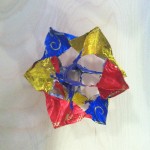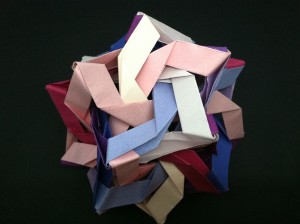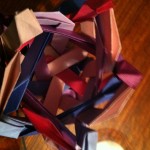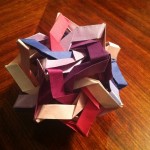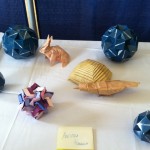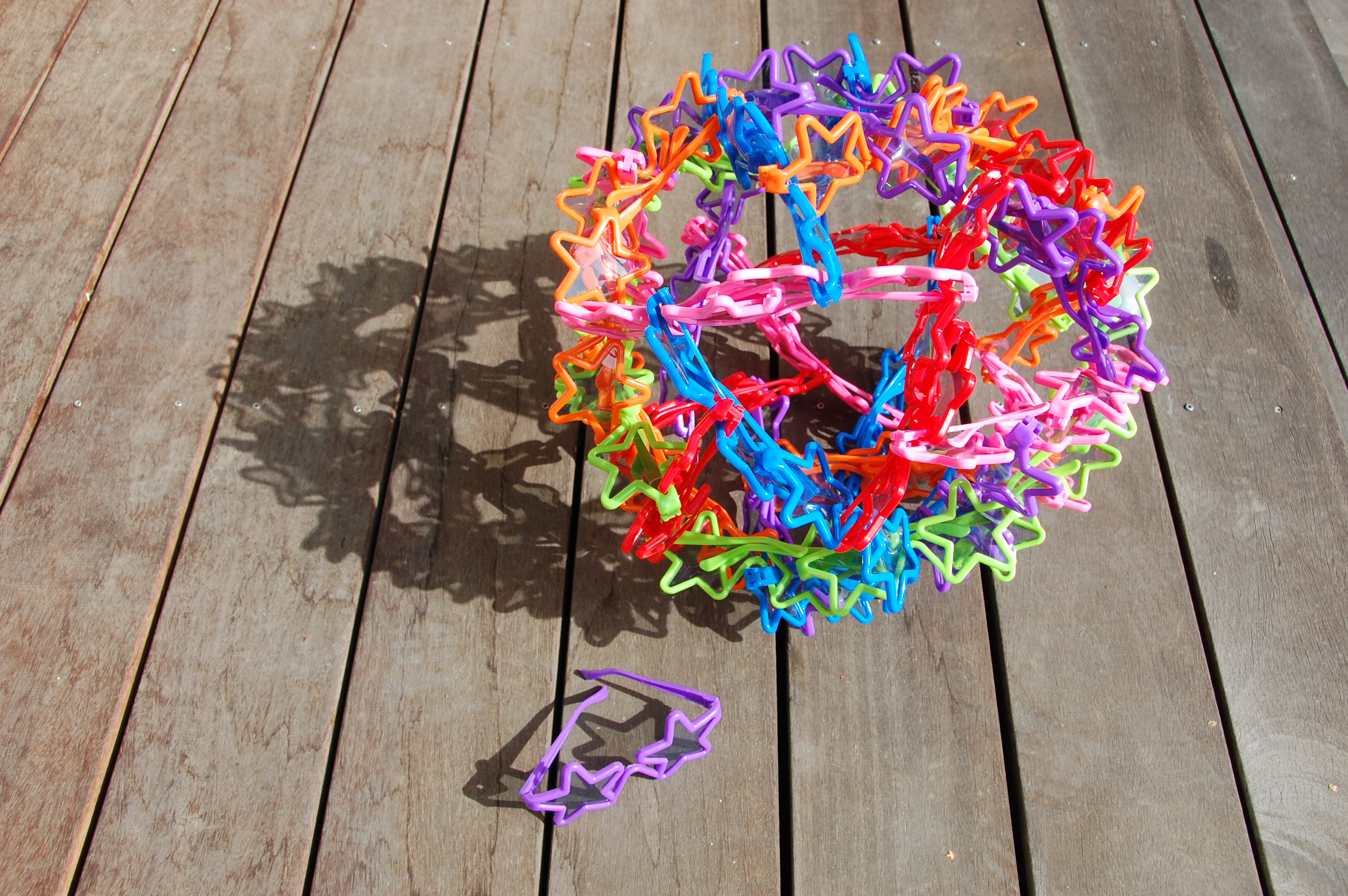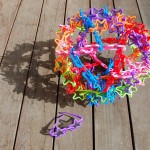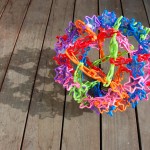and even more business cards inspired this “coin maze”. It has two inputs and one switch, for three possible penny trajectories.
Business Card Archimedean Solids
are a fun way to use up the excessive quantities of old business cards that my friends give me (which, of course, they are giving me because of my propensity to fold them into things – a most excellent cycle).
Thus far, I have come up with modules and designs for the truncated tetrahedron, truncated cube, truncated cuboctahedron, rhombicuboctahedron, truncated icosahedron, and rhombicosidodecahedron. I wouldn’t be surprised if some (or even all) of these designs were examples of parallel invention, but I haven’t seen any of them elsewhere as yet, and I certainly had a fun time coming up with and building them, which is probably the important part.
Things with icosahedral symmetry
often have “small friends” with octahedral symmetry.

Here are the “small friends” for Seeing Stars and the chocolate wrapper sculpture that I posted earlier. Super cute, although I must admit that I like icosahedral symmetry a bit better in general (perhaps why the other sculptures were made first ^^)
Origami Conventions
are great motivators for finally finishing those models that you haven’t gotten around to. The East Bay Origami Convention was this past weekend, and in addition to teaching my circus elephant, I also had a display with this model that I finally finished the night before the convention.
I’ve had this one floating around in my head ever since I saw George Hart’s Frabjous. It’s made out of 30 identical pieces intertwined as in Frabjous, although the exact shape of the pieces is a bit different, leading to a fairly distinctive end result.
One way of understanding the underlying geometry is to think of each piece as a subset of a rhombic side of the great rhombic triacontahedron, with the subset chosen such that the pieces don’t intersect.
Seeing Stars
is a geometric sculpture wherein one can see many stars — made out of a material itself intended for seeing stars (or at least the sun!).
Novelty sunglasses in six different colors interlock without glue or adhesives to create these intricate, chiral sculptures. Although the individual pairs of glasses are closed in the normal manner, their interlacing enables them to maintain distinctive forms.
The sculpture is made from 60 pairs of sunglasses. It is symmetrically colored such that the edges around the structure are accentuated.

